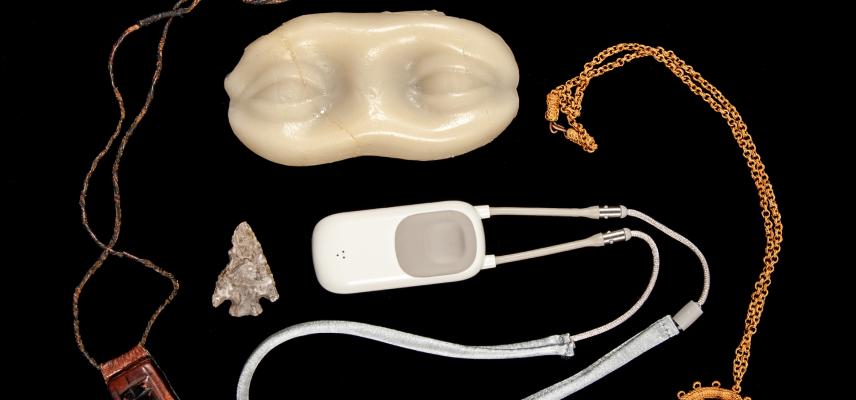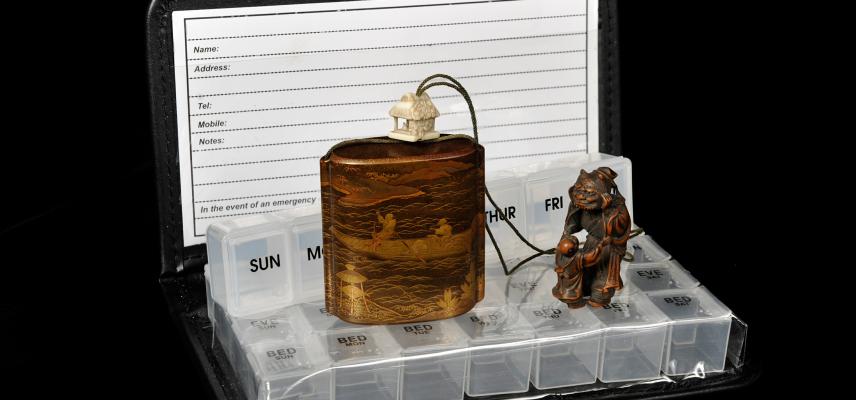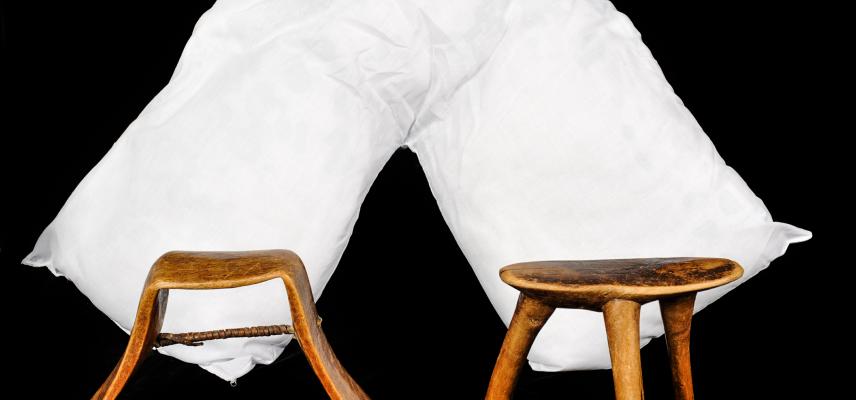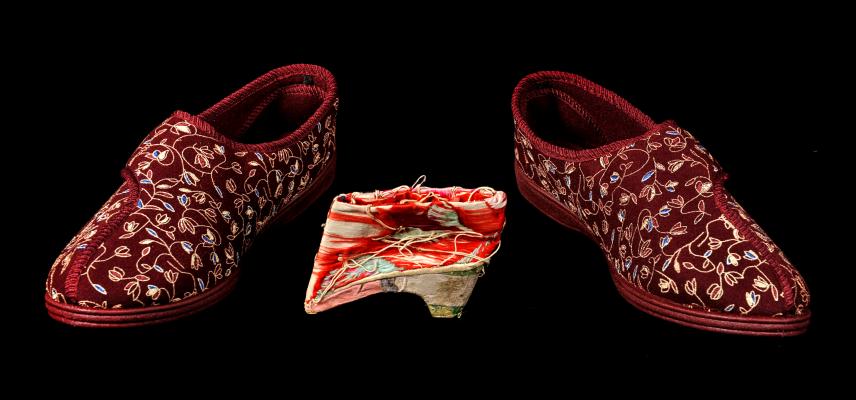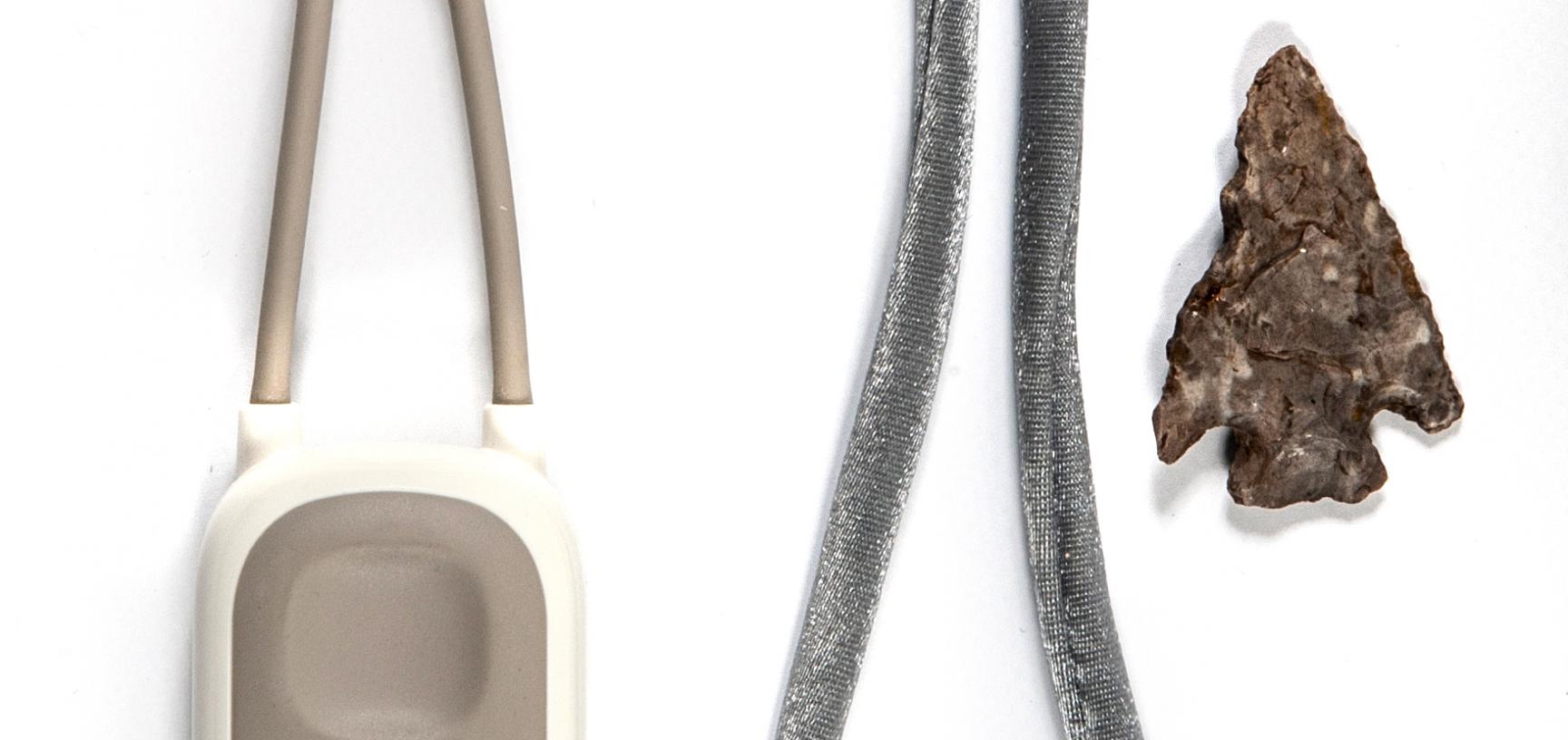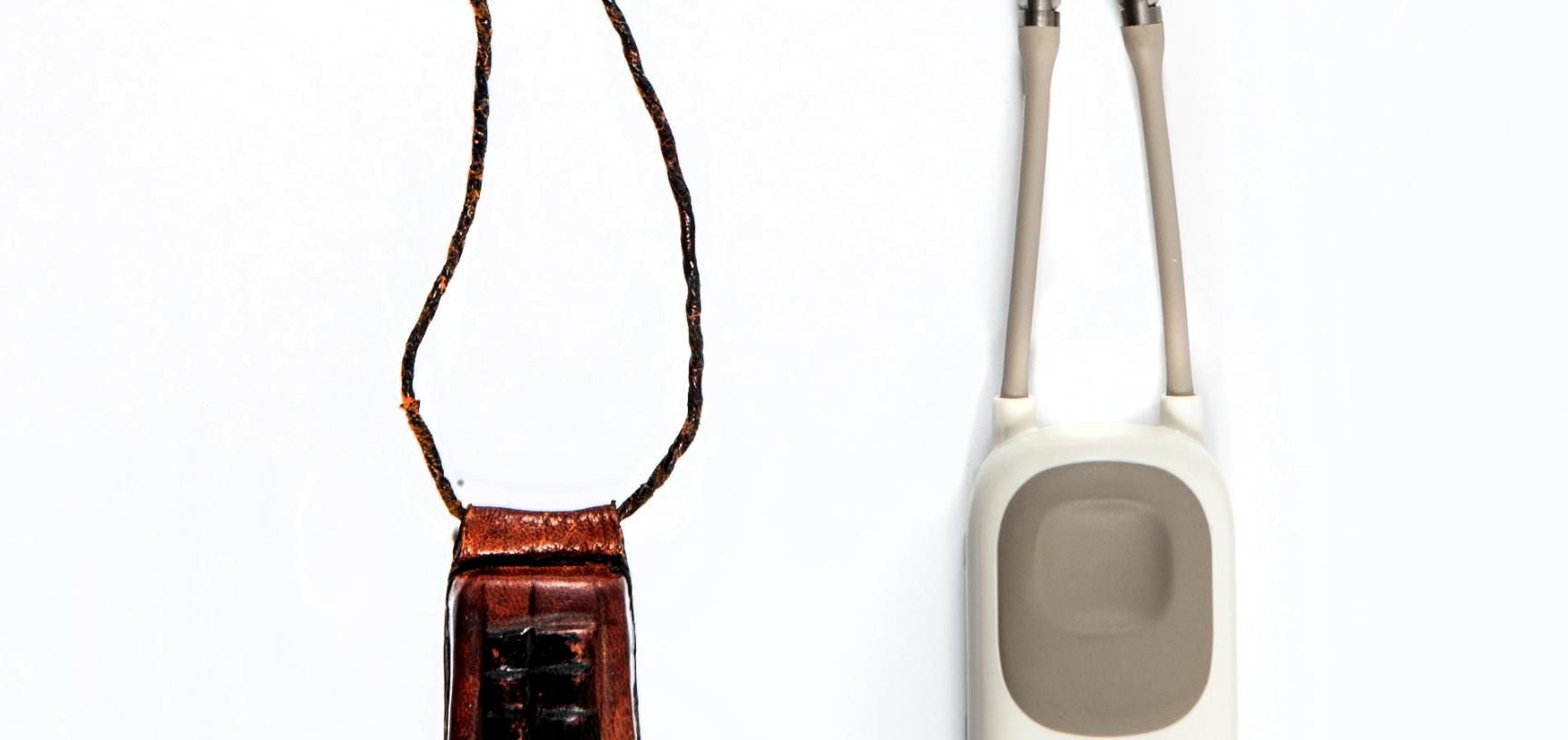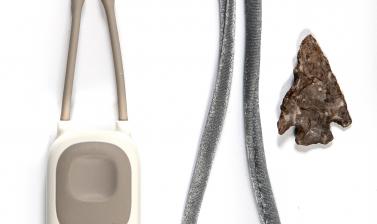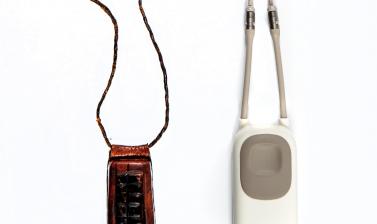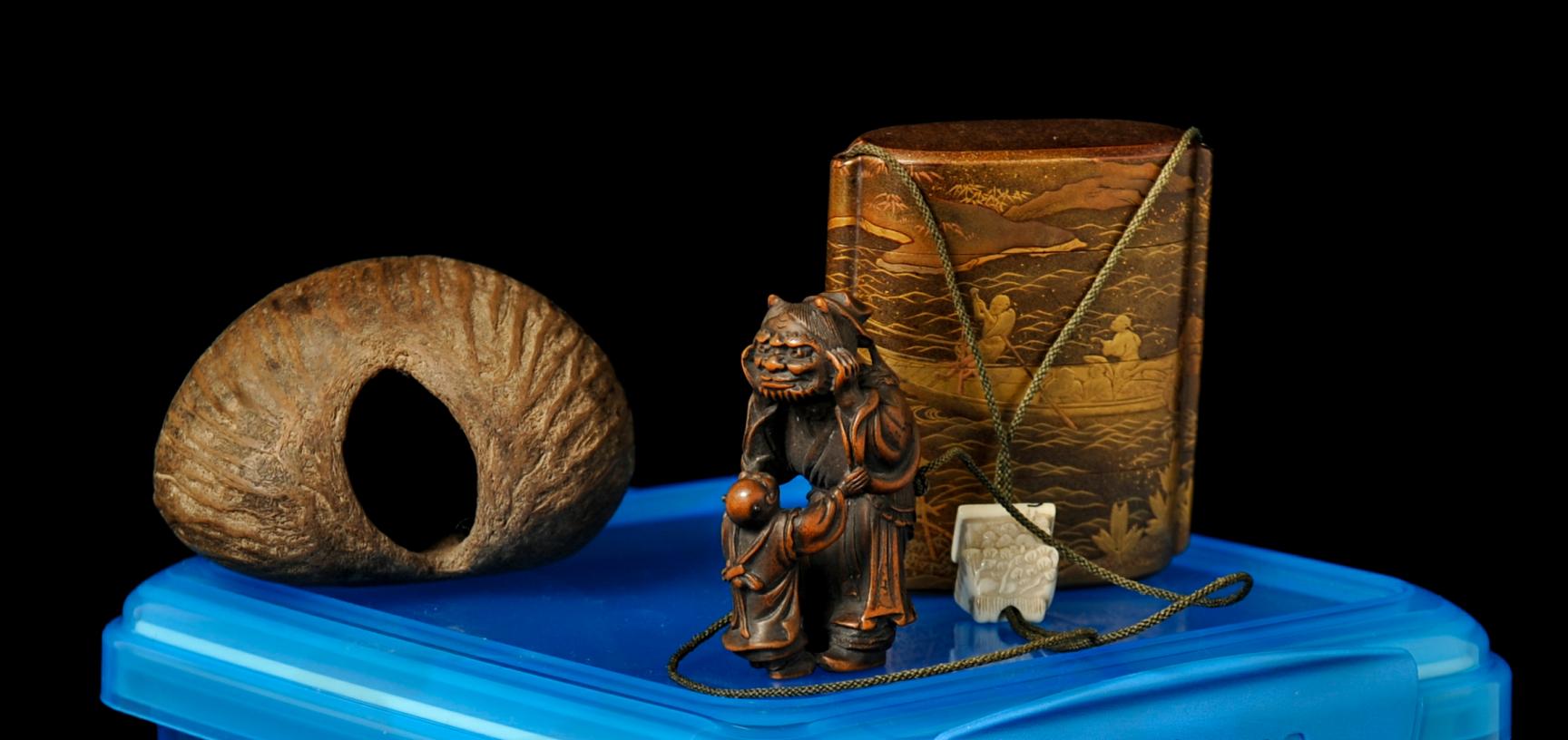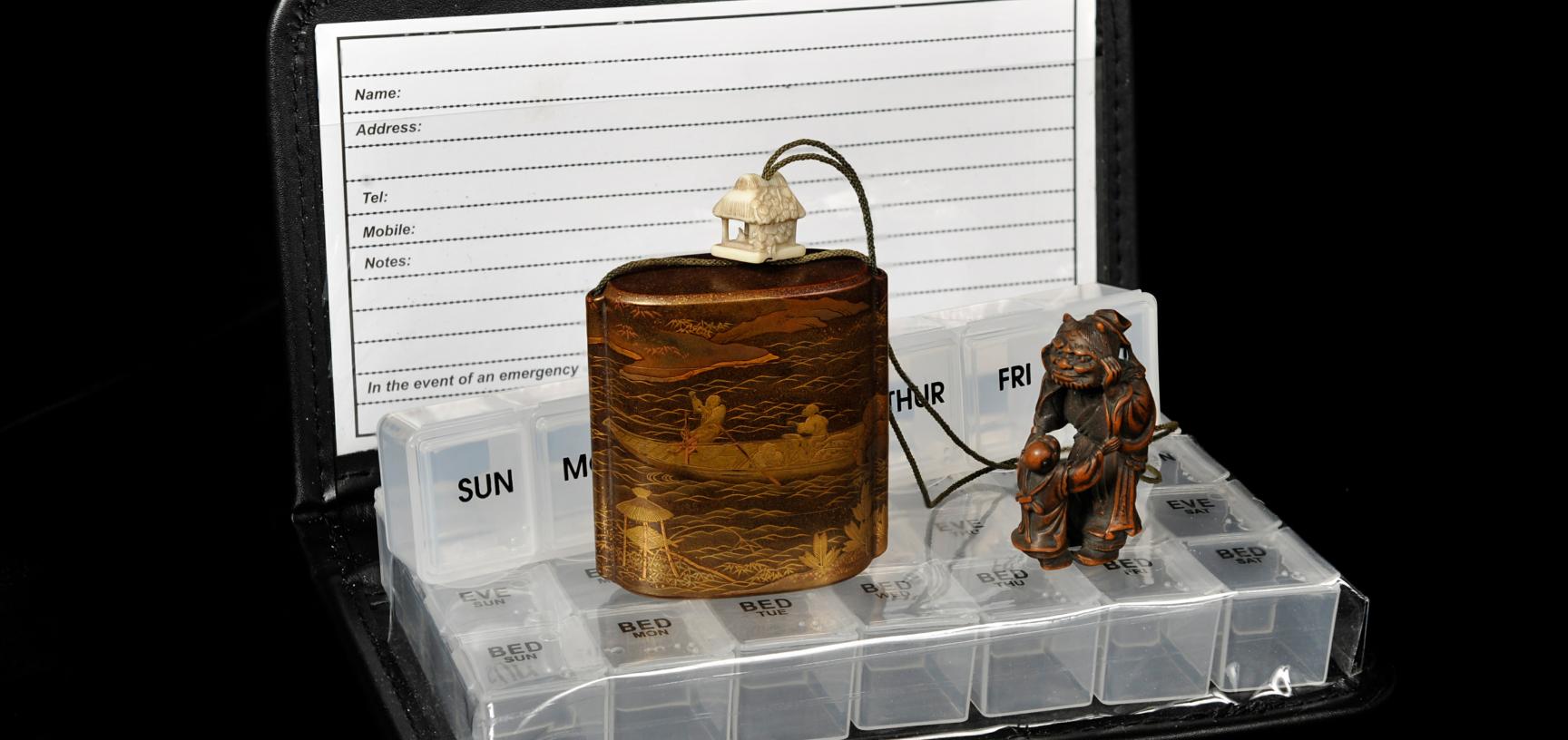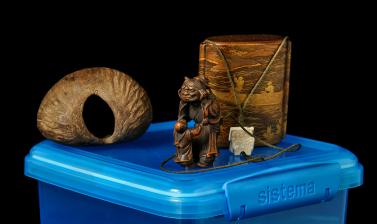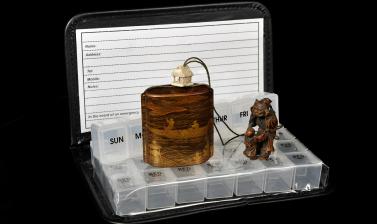Messy Realities: The Secret Life of Technology
Connecting museum collections and contemporary medical technologies
Messy Realities: The Secret Life of Technology explored the work of the research project Studies in Co-Creating Assisted Living Solutions (SCALS). The SCALS team invited museum engagement staff and members of the public to co-design a display that would reflect on the team’s research into assistive living technologies and generate new insights to inform ongoing research. This process brought together an interdisciplinary group of researchers, museum staff, designers from Rycotewood Furniture Centre and community members living with long-term health conditions to test connections between historic museum objects and contemporary medical technologies, particularly ‘assistive living technologies’. If we put unexpected objects together, could meaningful connections be made? Could we spark new ideas about what assistive living technologies are and find out new things about what they mean to the people who use them? Could we think about objects in the collections in new ways by viewing them alongside assistive living technologies from the SCALS research?
A museum of comparative technology meets assistive living technology
Often described as a ‘museum of comparative technology’, the Pitt Rivers collections can be understood as worldwide examples of technologies created to cope with the dilemmas of life. For example, it demonstrates ways to stay connected with loved ones, ways to worship and ways to care for family. To develop the Messy Realities display, we thought about objects in the collections as technologies that assist people to live their lives, just like the assistive living technologies from the SCALS research that we considered alongside them.
Amulets and alarms
As part of the display, we grouped Museum items with technologies from the SCALS research to create new meanings and make connections. In the two images below you can see a digital alarm designed for the user to wear around the neck to summon help, for example after a fall, next to an object from the Museum’s handling collection. In the first image, you can see a leather neck ornament (likely from Nigeria) and in the second, an arrowhead (UK). Both the leather ornament and the arrowhead would have been worn or held close to the body as protective amulets, helping their owner to feel safe. The SCALS research found that pendant alarms can take on amuletic meaning, with some people wearing them to feel safe while out, even though they know they do not work out of range of their house.
Medicine boxes
Containers were another type of object group we explored. We grouped together different types of containers used to hold ‘medicine’, and discussed what they brought to mind. Dosset boxes can be pre-prepared by pharmacists or filled by the user at home, but are often replaced with Tupperware or other containers better suited to the person using them. For example, we displayed the hollow shell of a nut from Uttar Pradesh Mirzapur (India) collected from a local ‘drug seller and surgeon’, and a gilt metal box (or ‘inro’) from Japan decorated with lacquer varnish, with the attached wooden netsuke and ivory model of a house. The nut shell, Tupperware (UK) and dosset boxes (UK) are functional and plain, with no intrinsic monetary value. In comparison, the decorative inro can indicate wealth and status. This object grouping stimulated interesting discussions with the co-curators about assistive living technologies, value, status and stigma.
Acknowledgements
For loan of assistive living technologies, thanks to:
- David Walker, Phillips
- Stephanie Bevan, Herts Careline
- Hannah Oatley, Oxford Academic Health Science Network
- Dr George Leeson, Oxford Institute of Population Ageing
- Sarah and Trevor Young
- Micro Scooters Ltd
- Dr Anne Ferrey, of the Yarnfulness Project
- Suzy Prior Photography
